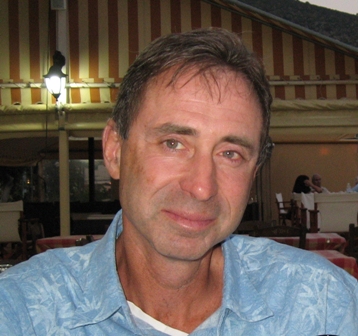Affiliation: University of Pennsylvania

Thomas Tartaron is Assistant Professor with the Department of Classical Studies at the University of Pennsylvania, where he is also a Consulting Scholar for the Museum of Archaeology and Anthropology. He holds his degrees from Miami University (B.A.) and Boston University (Ph.D.), and his research interests are Greek Bronze Age and Classical archaeology, landscape archaeology, geoarchaeology, and coastal archaeology. He has excavated extensively in Greece, and is the Co-Director of the Saronic Harbors Archaeological Research Project. His recent publications include Bronze Age Landscape and Society in Southern Epirus, Greece (BAR International Series 1290, 2004), and the forthcoming Mycenaean Coastal Worlds (Cambridge University Press, 2011).
Small coastal fishing communities are mentioned obliquely if at all in ancient literature, often in a pejorative sense and typically as “others.” Yet they provided essential commodities – most obviously salt and marine products – and often connected inland power centers with seaborne trade. In this lecture, I describe an approach that combines archaeological search for these elusive settlements with my current ethnographic project that uses oral histories from contemporary fishermen and women to identify similarities and differences among these communities throughout the world. These oral histories help archaeologists better understand the mute remains of small coastal sites. I illustrate case studies from Mycenaean Greece, Cyprus, Ireland, ancient South India, and the Maya world. My aim is to show the role that small coastal communities played in local-scale maritime and terrestrial networks, which in turn were embedded in networks at regional and international scales.
Short bibliography and/or website on lecture topic:
McKillop, H. 2019. Maya Salt Works. Gainesville: University Press of Florida.
Mylona, D. 2020. “Marine Resources and Coastal Communities in the Late Bronze Age Southern Aegean: A Seascape Approach,” American Journal of Archaeology 124: 179–213.
Synge, J. M. 2008 [1907]. The Arran Islands. London: Serif.
Tartaron, T. F. 2013. Maritime Networks in the Mycenaean World. Cambridge: Cambridge University Press.
In 2001 a group of archaeologists converged on Kalamianos, an unpromising, rocky headland near the fishing village of Korphos on the Saronic Gulf in southern Greece. What we discovered there was as remarkable as it was unexpected: the exposed foundations of a nearly complete Mycenaean harbor settlement. In this presentation, I illustrate the many ways we have explored this place in the last 20 years, focusing first on the archaeological site itself before moving outward to its hinterland; to a Saronic “maritime small world”; and finally to the bigger world of the Late Bronze Age eastern Mediterranean. I describe classic techniques of architectural documentation of some 50 buildings and on- and off-site pedestrian survey; marine geophysics and dive surveys to explore the harbor and work back to the Bronze Age shoreline; and an undergraduate project to imagine daily life at Kalamianos through artistic interpretation. I speculate on the possibility of the site being mentioned in the Catalogue of Ships in Book 2 of Homer’s Iliad. My aim is to show how diverse skill sets and areas of expertise can come together to paint a vivid portrait of a unique site that may have been Mycenae’s main harbor on the Saronic Gulf.
Short bibliography and/or website on lecture topic:
Pullen, Daniel J. 2013. “The Life and Death of a Mycenaean Port Town: Kalamianos on the Saronic Gulf,” Journal of Maritime Archaeology 8: 245–262.
Tartaron, Thomas F., Daniel J. Pullen, Richard K. Dunn, Lita Tzortzopoulou-Gregory, Amy Dill, and Joseph I. Boyce. 2011. “The Saronic Harbors Archaeological Research Project (SHARP): Investigations at Mycenaean Kalamianos, 2007–2009,” Hesperia 80(4): 559–634.